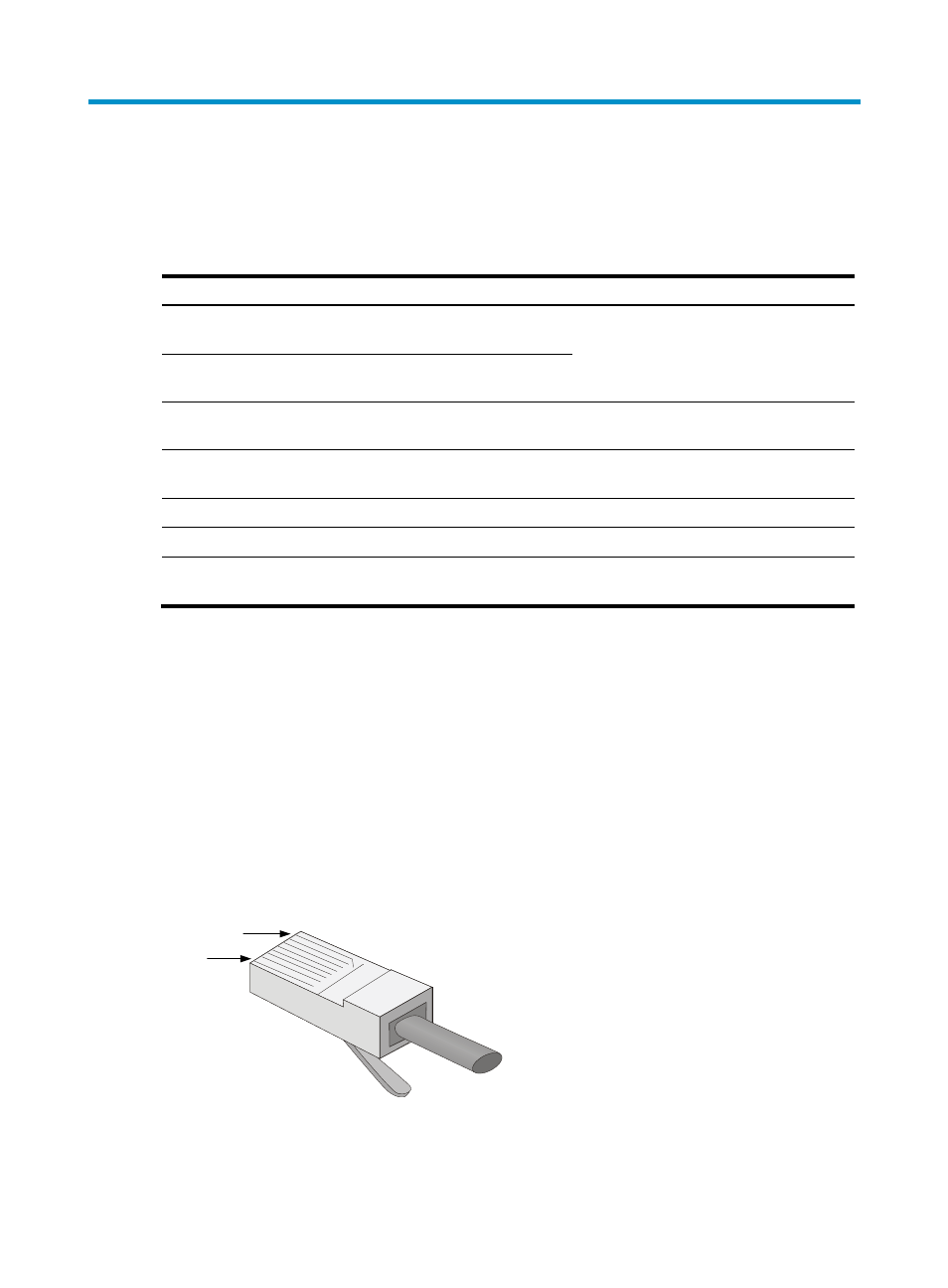Appendix e cables, Ethernet twisted pair cable, Rj-45 connector – H3C Technologies H3C S7500E Series Switches User Manual
Page 137

127
Appendix E Cables
This chapter describes the cables used for connecting network ports.
Table 80 Cable description
Cable Port
type
Application
Console cable
Console port at one end and 9-pin
serial port at the other end
Enables users to perform debugging,
configuration, maintenance, management,
and software loading on the device.
USB console cable
USB console port at one end and
USB port at the other end
RJ-45 Ethernet ports
Connects RJ-45 Ethernet ports to transmit
data
XFP/SFP+/SFP/CFP/QSFP+/EPON
ports
Connects the fiber ports to transmit data
SFP+ ports
Connects SFP+ ports to transmit data
QSFP+ ports
Connects QSFP+ ports to transmit data
QSFP+ port at one end, and SFP+
port at the other end
Connects a QSFP+ port to an SFP+ port
Ethernet twisted pair cable
An Ethernet twisted pair cable consists of four pairs of insulated wires twisted together. It mainly transmits
analog signals and is advantageous in transmitting data over shorter distances. The maximum
transmission distance is 100 m (328.08 ft).
RJ-45 connector
An Ethernet twisted pair cable connects network devices through the RJ-45 connectors at the two
ends.
shows the pinouts of an RJ-45 connector.
Figure 73 RJ-45 connector pinout diagram
PIN #8
PIN #1